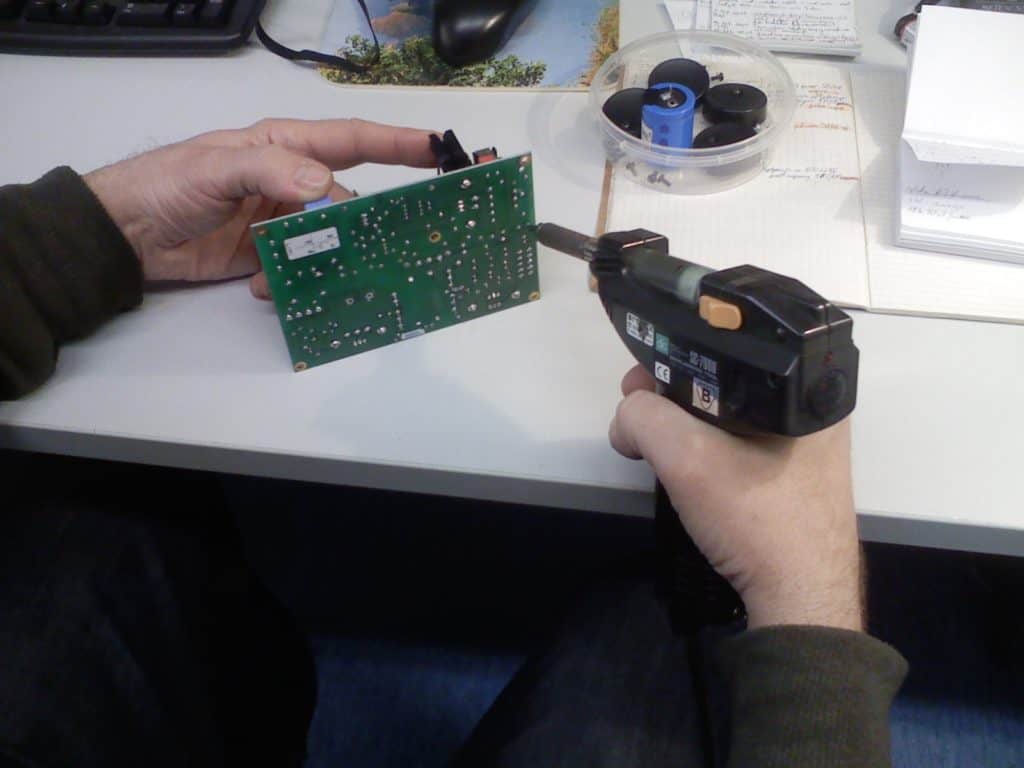Keeping your keyboard squeaky clean and running in tip-top shape is an important part of office maintenance. Whether you are using your keyboard for work, gaming, or both – having a fully functioning keyboard is of the utmost importance.

Many people fail to take proper care of their keyboard, this can end up being a costly mistake as they degrade over time due to neglect. Why spend hundreds of dollars on a beautiful custom mechanical keyboard if you aren’t going to treat it correctly?
This article is going to educate you on the importance of keeping your switches well lubed and even how to do so without needing to use desoldering agents.
This post contains affiliate links
Table of Contents
Do you need to lube switches?
Lubing your keyboard switches is not a complete necessity. You don’t have to do it, your keyboard will work without it. But, it won’t work as well. Lubricated switches that have been well lubricated are far more reactive and easier to use than ones that haven’t been.
It is important to note that bad switches won’t turn good just from a simple lubricant. If you have a high-quality keyboard, with good switches, then using lubricant will make them great. If you have a slightly older but still good keyboard then lubricant will help it work closer to how it did when it was new.
However, using a lubricant on a bad keyboard won’t make the switches good. It isn’t a magic potion if you want good switches you need to buy good switches.
What can happen if you don’t lube your switches?
If you don’t lubricate the switches they are still going to work, just not as well. The biggest difference that is immediately apparent is how much louder unlubricated switches are.
When you are typing on the keyboard you can hear the click-clack-click-clack of someone typing away. By lubricating the switches you can deafen this sound. You won’t be able to remove it entirely though.
Here’s a video of the sound difference between a lubricated switch and a non-lubricated switch:
Note: the guy in the video uses Gateron switches but the results will be similar for most switches.
Some people like the sound, if that applies to you then don’t bother lubricating your switches at all.
Related article: Quiet your keyboard by using O-rings
What equipment do you need to lube switches?
You don’t need many tools or pieces of equipment to lube your switches. If you have ever taken your keyboard apart before you will have all the items necessary. You will need all of the following items to ensure you get the job done right and don’t lose any pieces:
- Screwdriver
- Two trays for storing all the loose screws in
- Switch opener
- Lube – of course
- Brush
- J-cloth
- A bowl of lukewarm water
The great thing is, all these products can easily be found on Amazon
What are the best lubes to use?
Don’t let anyone tell you that you need an expensive lubricant. Nor that you need very much of it. You can get by just fine with one of the standard lubricants found on amazon, such as this one. The lubricants should be no more than $30 for a decent quantity.
Some people choose to use a gelly like a lubricant, similar to KY Jelly, however, the best lubricants are often more like grease. Similar to WD-40 or some other such well-known grease. Don’t use WD-40 though.
Additionally, you may hear second-hand anecdotal advice to save money and use bicycle chain grease. Don’t. Trust me, just don’t.
Lastly, don’t use very thick greases. You may find that the keys end up a little sticky. At least in the short term. There will be no way to remove the stickiness either except excessive use. It’s not ideal.
Side note: You can check out my other article if you want to know what lube is best for each type of switch – Tactile, Linear, and Clicky
What is desoldering?
Desoldering refers to using some kind of agent to remove electronic components solder. The metal-like substance that can be found on circuit boards to hold components in place.
When it comes to keyboards, the switches are very often soldered on. This means if you want to take the switches out you will need to remove the solder. Or, more precisely loosen it.
This can be done with a desoldering solvent that will eat away at the solder or by using a soldering iron. The soldering iron can be used to reheat the solder, and then with some careful pressure on the bottom of the switches and a little, for lack of a better word jiggling, the switches will fall out.
They can then be lubricated. This is a tedious task that would require you to resolder every individual switch when you re-assemble the keyboard.
Do I need to desolder?
No, you don’t need to desolder. With the use of a switch opener and some delicate fingers, you can get the job done without the messy and time-consuming task of desoldering and resoldering.

Switch opener found on Amazon
Many people choose to desolder because they want to give their switches a thorough clean, or even swap them out entirely. Luckily, anyone can lubricate their switches with just the above-mentioned items.
No soldering iron or strong solvents will be needed. That makes lubing the switches without desoldering both the easiest and cheapest method. Perfect for experts and beginners alike.
How to lube switches without desoldering:
Lubing your keyboard switches without desoldering is not all that difficult. The biggest factor for you to consider if this is your first time doing it is that patience is key.
If you take your time, double-check what you are doing, and have delicate fingers you won’t damage or lose anything. Here is a breakdown of the steps that need to be taken to lube your switches without desoldering.
Disassemble:
First, you are going to need to take the keyboard apart. This step is not so much difficult as it is ripe for mistakes.
First, turn your keyboard upside down. Next, take your screwdriver and take out all the main screws. Your keyboard should come apart in two halves.
The first half is just going to be the keys themselves and the frame. If you are planning on cleaning the keys, now is the time for that.
The other half is what we are interested in. This half is the circuit board and the key switches. If you were planning on desoldering the switches, you would need to flip this half over. Luckily, we don’t. So keep it remaining face up.
Next, we need to remove the switches themselves. Take the switch opener and insert it, or both of them, on either side of the key.
You should, with a little pressure, be able to jimmy the switch out. The switch will likely contain a switch top, stem, and spring.
The spring should be stored in one of the trays so you don’t lose it. If you lose any of these pieces your key is not going to work anymore. Repeat this step for every key.
It is far more time-efficient to do all of the keys at once, than lubing one key at a time. Though you can do it either way if that’s your preference.
Clean:
Next, you may want to give your keyboard a quick clean. Not the keys themselves, the frame around the switches.
Dirt, dust, and grime can cause your keys to stick and may even end up breaking them over time. To clean, just use a damp J-cloth to wipe around all of the frames gently. This will pick up all of the loose particles.
Next, go over the frame again with a dry cloth. Removing all the moisture now before you put the keyboard back together will prevent mold from developing.
Lubricate:
Next, comes the time to lubricate the switches. Take your paintbrush and put a very small amount of the lubricant on it. Just enough to coat the brush, not so there is a thick blob.
First, lubricant the bottom of the switch. Brush around the little tube that the spring sits in.
Next, lubricant under the stem that sits in the spring. Just the tiniest dab of lube is needed here or it may end up too “loose”. Don’t lubricate anything else.
If you wish to grease up the tops of the keycaps you may. It will make them shiny but doesn’t truthfully serve much of a purpose.
Here’s a video of another simple lubing method without desoldering. Keep in mind, it’s not as effective because he didn’t open the switch.
Re-assemble:
Reassembling the keyboard is the most time-consuming part of this whole task.
First, put the springs and switches back into the frame. They will clip into place relatively easily. Much easier than taking them out.
Then, place the top half of the keyboard back over the switches. Line up the keys as best you can and then flip the keyboard over.
Once the keyboard is flipped over you can begin screwing it back together. This is why having the screw tray comes in handy, because if you are missing a screw you are, ahem, screwed.
Conclusion:
Hopefully, you now have a pretty good idea about how to lubricate your keyboard switches. It may sound like a daunting task right now, but don’t worry. Once you get into it you will realize how easy it actually is. The first time is always the hardest, after that, you will be fine. Remember, take your time, read this guide carefully and good luck!

